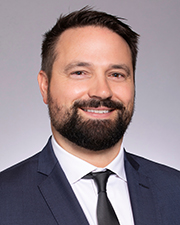News: Financial Digest
Posted: August 13, 2015
A strong asset improvement program creates value and improving tenant satisfaction
Most of us have an idea of the gas mileage our cars are achieving because the dashboard gives us this information in real-time. Can we say the same for the buildings we manage? Do we know what the "miles per gallon" equivalency is (in other words, how efficient the building is operating)?
The daily list of items a facility manager has to be concerned with includes maintenance, repair, janitorial, comfort and grounds to name just few. Utility costs are also included and, more importantly, understanding how those costs are connected to the tenant experience, HVAC equipment life-expectancy and capital cost avoidance.
Thirty percent of a building's controllable expenses are utilities (electricity, fossil fuels and water) and seventy-five percent of those costs are directly connected to HVAC and lighting. Not monitoring and fully understanding how those costs are affected by the performance of the HVAC and lighting systems can leave a building with unacceptable comfort levels, high operating expenses, and a less-than-ideal tenant experience.
Software as a service (SaaS) platforms make it possible to create a feedback loop so we can understand how utility costs are directly connected to the HVAC and lighting systems. By continuously accessing, analyzing and understanding the data, smart changes can be implemented that will reduce utility costs between 10 and 30% (per BOMA). And because this is an ongoing process, the savings over time can be tracked to ensure the building's performance isn't drifting.
An asset improvement program that includes an SaaS component combined with enhanced and predictive maintenance services for HVAC and lighting systems. The program provides facilities managers with a way to hold their HVAC service provider accountable for performance of their services because the facilities manager is receiving monthly performance information, through an online dashboard. The information includes (1) an Energy Star benchmarking score, (2) utility bill error analysis, and (3) weather-normalized cost performance. This program strongly positions the facility manager as a value creator because studies have shown for every dollar he or she eliminates from operating expenses the building will increase in value by $10.
As building owner or property manager, your two primary areas of focus are 1) increasing revenues and 2) improving tenant satisfaction. The programs and services we discussed above can assist in these areas however they require you to invest capital and personal. The "metered energy efficiency transaction structure" (MEETS) will help you increase your revenues while simultaneously improving tenant satisfaction without investment of capital or personnel by you or your property manager. You'll receive revenue from an "EnergyTenant" who will then assume responsibility for your energy using assets (hvac, lighting, plumbing systems, etc). The "EnergyTenant" generates efficiency from these assets and sells that efficiency to a utility or other entity who may be interested in purchasing efficiency as a resource. A MEETS transaction will 1) increase your lease revenue, 2) improve tenant satisfaction, 3) help you meet corporate sustainability objectives and 4) increase the value of your building.
Ellis Guiles, Jr., is director of building services of HT Lyons, Allentown, Penn.
Tags:
Financial Digest
MORE FROM Financial Digest
Preservation of Affordable Housing secures $23.5 million in financing from Rockland Trust and Citizens Bank
Cambridge, MA The nonprofit Preservation of Affordable Housing (POAH) has secured $23.5 million in financing from Rockland Trust and Citizens Bank to transform a 150-year-old, underutilized church complex into housing. The project will ultimately create 46 affordable family-sized apartments.
Columns and Thought Leadership

Examples of investors who used Kay Properties for legacy and estate planning purposes for rental property/portfolios - by Dwight Kay
Preserving wealth across multiple generations requires strategic planning, foresight, and the right investment vehicles. Delaware Statutory Trusts (DSTs) offer a powerful solution for families looking to build and protect their financial legacy and to efficiently plan for their estate.

Conn. hospitality market: A technical appraisal perspective on market dynamics and valuation challenges (2019-2025)
The Connecticut hospitality market has demonstrated uneven recovery patterns between 2019 and 2025, with boutique and historic properties achieving $125 RevPAR in 2025, up 8.7% from the 2019 level. Coastal resort properties achieved a $105 RevPAR in 2025, representing 10.5% growth since 2019. Casino corridor properties maintained modest growth with RevPAR improving 4.5% to $92 in 2025.









